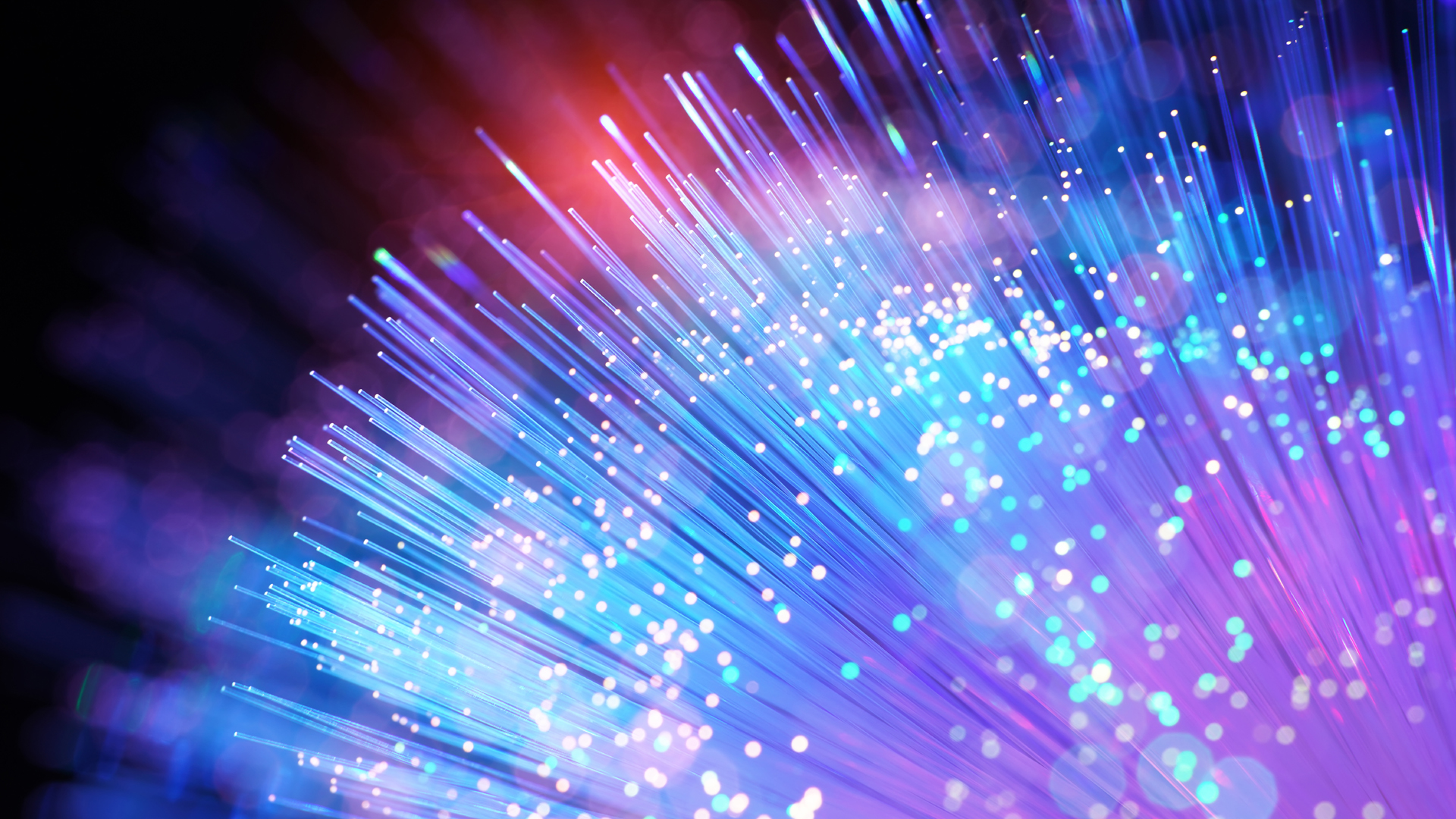Engineers enable quantum communication over existing fiber optic cables — new research shows data transmission using quantum teleportation is possible in parallel with a classical network at specific wavelengths

Engineers at Northwestern University have successfully achieved quantum communication in parallel with classical channels by identifying specific wavelengths with minimal interference from classical signals (Source: northwestern.edu). This breakthrough lays the groundwork for quantum communication by leveraging existing infrastructure and sending quantum data alongside classical data. The researchers managed quantum teleportation over a 30.2km fiber optic cable carrying 400 Gbps of classical traffic.
Quantum computing seems to be all the hype these days. Google claims its new quantum chip can solve problems swiftly, which classical computers would otherwise take, and I quote 10 septillion years to do. Quantum entanglement is a phenomenon wherein two particles are linked so that their quantum states (spin, polarization, energy levels, etc.) are connected, regardless of the physical distance. When measuring the state of one particle, the entanglement collapses, revealing the correlated state of the other particle. However, this does not allow for FTL (Faster Than Light) communication in line with the no communication theorem.
Enter Quantum teleportation. This concept combines entanglement with a classical channel, such as the Internet, and is the backbone of this research. It transfers one particle's quantum state to another located elsewhere.
Jordan Thomas, one of the research paper's authors, underlined the essence of quantum teleportation; “By performing a destructive measurement on two photons — one carrying a quantum state and one entangled with another photon — the quantum state is transferred onto the remaining photon, which can be very far away.” A key point to understand here is that the photons aren't transmitted physically. Instead, information encoded within their quantum states is what is sent.
The primary concern with a worldwide network employing quantum teleportation is compatibility; will quantum communication work over classical channels? The likelihood of interference is exceptionally high among the billions of photons being sent concurrently in a fiber optic cable. The research discovered specific wavelengths where the density of classical photons was lower, making such wavelengths suitable for the photons in quantum teleportation. Bell state measurement, or simply state measurement, is performed at the mid-point of the cable. Coupled with other methods to reduce noise and interference, this method can potentially support multiple TB/s of classical data alongside quantum communication.
While it may take years or decades before quantum communication goes mainstream, Prem Kumar, the head of the research team, has high hopes for the future. Based on the current roadmap, the next major milestones are using two pairs of entangled photons instead of one and scaling this experiment to real-world optical fiber networks.
Get Tom's Hardware's best news and in-depth reviews, straight to your inbox.

Hassam Nasir is a die-hard hardware enthusiast with years of experience as a tech editor and writer, focusing on detailed CPU comparisons and general hardware news. When he’s not working, you’ll find him bending tubes for his ever-evolving custom water-loop gaming rig or benchmarking the latest CPUs and GPUs just for fun.
-
SomeoneElse23 I don't see the significance of this?Reply
It's like discovering you can run internet "signals" over coax and not interfere with cable television?
Maybe I'm missing something. -
A Stoner quantum entanglement is like a person who can perform flawlessly with trillions of observers watching (the entire universe knows the state every particle is in), but the second their wife watches (a human notices), they completely breakdown and are incapable of of action.Reply -
Geef As long as it is possible it WILL happen. Internet data has to be transmitted somehow. If quantum entanglement is able to do it better/faster, then it WILL be exploited to it's fullest extent.Reply -
bit_user Reply
I think there are multiple steps here, which might be causing some confusion. First, the entangled photon must be transmitted to the other end of the fiber link. Once it's received, the two endpoints can communicate via quantum teleportation, so long as it remains entangled with another photon retained by the sender. Once the entanglement is lost, you have to send another entangled photon.The article said:A key point to understand here is that the photons aren't transmitted physically. Instead, information encoded within their quantum states is what is sent.
The benefit is that nobody can eavesdrop on what you send via quantum teleportation, so long as they didn't capture one of the entangled photons. From what I've managed to find, it does not enable faster-than-light communication, however. -
bit_user Reply
It means you don't need a dedicated fiber network to enable quantum communication. Since laying fiberoptic cables is incredibly expensive, that represents a huge step forward in the feasibility of using quantum communication in practice.SomeoneElse23 said:I don't see the significance of this?
Nobody is saying quantum communication is more cost-effective than conventional photonic communication. In fact, every few years, it seems like someone demonstrates ways to cram even more data over existing fiber links.Geef said:As long as it is possible it WILL happen. Internet data has to be transmitted somehow. If quantum entanglement is able to do it better/faster, then it WILL be exploited to it's fullest extent.
Quantum communication is really about security, as far as I understand. -
DougMcC Reply
Came to say the same but you scooped me. This enables quantum over conventional infrastructure, and quantum is important because it is unhackable to the best of our understanding of the laws of physics.bit_user said:It means you don't need a dedicated fiber network to enable quantum communication. Since laying fiberoptic cables is incredibly expensive, that represents a huge step forward in the feasibility of using quantum communication in practice.
Nobody is saying quantum communication is more cost-effective than conventional photonic communication. In fact, every few years, it seems like someone demonstrates ways to cram even more data over existing fiber links.
Quantum communication is really about security, as far as I understand. -
usertests Reply
The big application (if any) is going to be securely sharing a key (quantum key distribution).bit_user said:Nobody is saying quantum communication is more cost-effective than conventional photonic communication. In fact, every few years, it seems like someone demonstrates ways to cram even more data over existing fiber links.
Quantum communication is really about security, as far as I understand.
https://en.wikipedia.org/wiki/One-time_pad#Quantum_and_post-quantum_cryptography -
Nyara Reply
Main objective is actually being able to connect Quantum Computers with each other; and this was already possible, albeit needing to build new expensive cables and standards. Engineers just solved this allowing co-use of traditional and Quantum with existing infrastructure.bit_user said:Quantum communication is really about security, as far as I understand.
As for the security part: you need Quantum Computers in both ends, and it is true that if intercepted, then no information is stolen, and both sides become aware. However, this is already possible in traditional computing through packet loss on end, and ping timeouts, and the packet is "stolen", though it needs full cooperation of the ISP to happen. Realistically, this is only a minor concern for security agencies.
Quantum Computers and Quantum Communication are actually kind of anti-security, since Quantum Computers can monte carlo using true-randomness particle measuring so fast that they can try every possible encryption combination in a few seconds, while traditional computer's pseudo-random makes them spend multiple cycles in a binary 1-0, and thus solves those problems almost infinitely slower in multiple orders of magnitude, slow enough that the hackers need some background information to reduce the possibilities.
So at the moment a fully viable Quantum Computer shows up, anybody owning such computer can break the whole Internet's securities in a few days at best. Current Quantum Computers are just experimental, however, they are just concerned to even being able to operate a computer program (this is the tradeoff of randomness, that you need to stabilize it, currently an unresolved problem, but there is solid progress recently). The other is size and cost, since those things are whole buildings long and requires near-0 kelvin temperatures. -
bit_user Reply
Can you support that with a source of some kind?Nyara said:Main objective is actually being able to connect Quantum Computers with each other;
The reason I ask is that it's not at all clear to me why a quantum computer couldn't simply communicate via conventional infrastructure. As for actually using entanglement at a distance to scale computation, it just seems like it'd be far too fragile. I mean, like way, way, way too fragile. If they have enough trouble maintaining coherence between the qubits within a machine, all isolated and maintained at temperatures a fraction as warm as interstellar space, how well do you expect it's going to work when you add the variable of photons sent hundreds of km away, captured, and then somehow synchronized with a QC at the other end?
I can't claim to understand how they work, but there are actually so-called post-quantum encryption schemes that claim to be resistant to cracking by quantum computers:Nyara said:Quantum Computers and Quantum Communication are actually kind of anti-security, since Quantum Computers can monte carlo using true-randomness particle measuring so fast that they can try every possible encryption combination in a few seconds,
https://www.nist.gov/news-events/news/2024/08/nist-releases-first-3-finalized-post-quantum-encryption-standards
The ones I've seen are maybe the size of refrigerator or perhaps a small car, including the containment vessel. Of course, that's not including the equipment needed to cool it down to its operational temperature range.Nyara said:The other is size and cost, since those things are whole buildings long and requires near-0 kelvin temperatures.